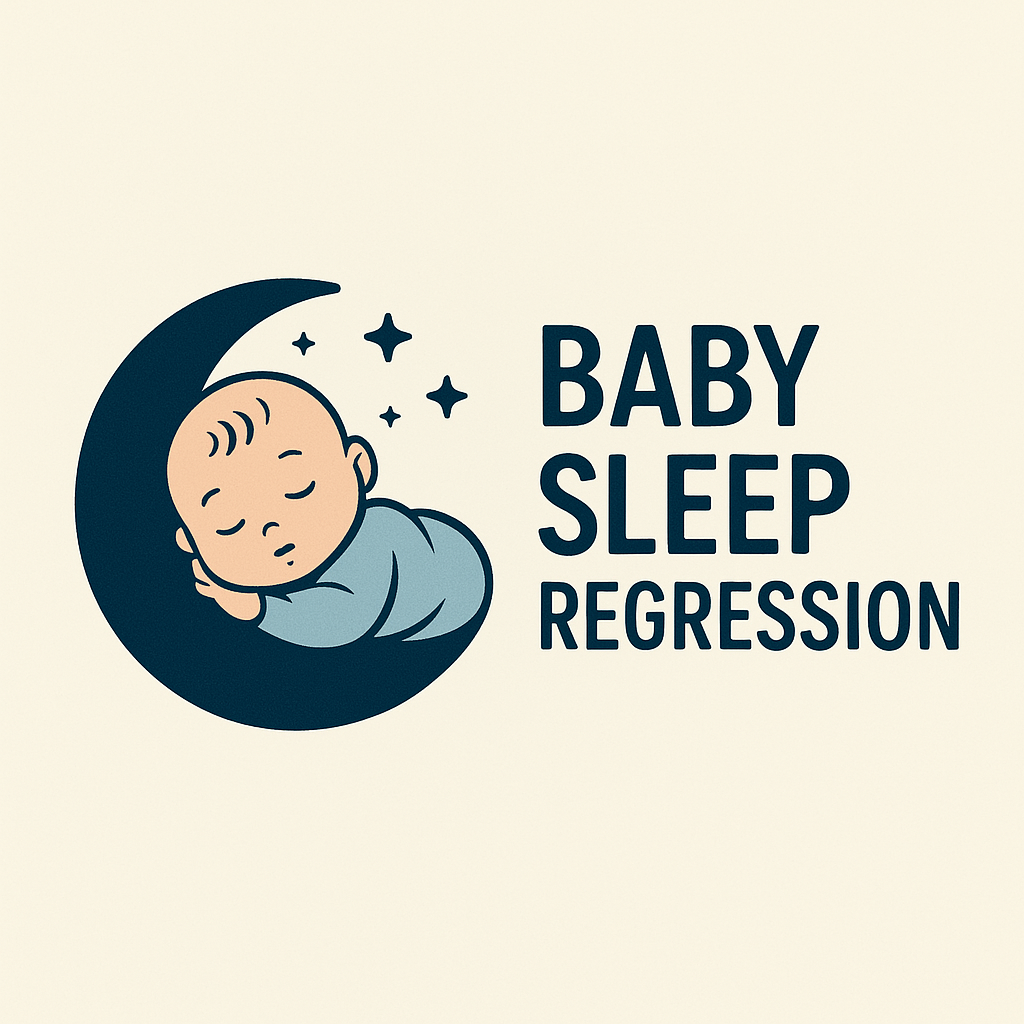15 Month Sleep Regression Tips Every Parent Should Know

The 15-month sleep regression often brings sleep challenges when your toddler reaches this age. This phase can disrupt their routine, leaving you feeling exhausted and uncertain about how to handle it. During the 15-month sleep regression, your child may wake frequently, resist naps, or have trouble falling asleep, which can affect their mood and development.
Although it can be stressful, this phase is temporary. By recognizing the signs and understanding the causes of the 15-month sleep regression, you can explore strategies to improve your child’s sleep. With patience and consistency, you’ll navigate through this stage successfully.
Key Takeaways
Notice signs like waking up often or refusing naps. This helps you handle your toddler's sleep problems better.
Stick to the same bedtime routine. It makes your toddler feel safe and know it's time to sleep.
Make the room comfy. Keep it cool and use dark curtains to block light.
Teach your toddler to calm themselves. Put them to bed awake so they learn to sleep alone.
Be patient and adjust your goals. Focus on small wins, not perfection.
Don’t start habits like rocking them to sleep every night. These can be hard to stop later.
Watch for signs of sickness or pain. These might cause sleep troubles. See a doctor if needed.
Sleep regression doesn’t last forever. Stay calm and consistent, and sleep will get better.
Signs of 15-Month Sleep Regression

Knowing the signs of the 15-month sleep regression can help you manage your toddler's sleep struggles. These signs usually fall into three groups: sleep problems, behavior changes, and nap issues.
Sleep Problems
Waking Up More at Night
If your toddler starts waking up often at night, it might be the 15-month sleep regression. They may have slept well before but now wake up crying or calling for you. This change can make both of you feel tired and upset.
Trouble Falling Asleep
Bedtime might become harder during this time. Your toddler may not want to go to bed, even if they are sleepy. It might take longer for them to calm down, which can mess up their sleep schedule. A relaxing bedtime routine can help make things easier.
Behavior Changes
Being Clingy or Fearful of Separation
Your toddler might want to stay close to you more than usual. They could cry when you leave or refuse to sleep without you nearby. This clinginess is often caused by separation anxiety, which is normal as they become more aware of their surroundings.
Mood Swings or Crankiness
Poor sleep can make your toddler grumpy or upset during the day. They might throw tantrums more often or get annoyed over small things. These mood changes are usually linked to bad sleep or waking up at night.
Nap Issues
Fighting Naps
Your toddler might start refusing naps, even though they still need them. They could cry, argue, or not want to lie down at nap time. This can make it hard to keep a regular nap schedule, which is important for good sleep.
Shorter or Skipped Naps
Sometimes, your toddler might take very short naps or skip them completely. This can make them overly tired, which might make nighttime sleep worse. Keeping a steady nap routine and a quiet space can help improve their naps.
Tip: Spotting these signs early can help you handle the 15-month sleep regression better. By understanding what your toddler needs, you can find ways to improve their sleep and reduce problems.
Causes of 15-Month Sleep Regression
Knowing why the 15-month sleep regression happens can help you fix your toddler's sleep troubles. This stage is often caused by new skills, physical changes, or shifts in their environment.
Developmental Milestones
Learning New Skills
At this age, toddlers grow fast in thinking and moving. They might start walking better, climbing, or even trying to run. These exciting skills make it hard for their brain to relax at night. Their mind keeps replaying these new things, which can mess up their sleep.
Growing Curiosity
Your toddler becomes more curious about the world. They may not want to sleep because they fear missing out. This strong interest in exploring makes it harder for them to calm down for naps or bedtime.
Physical Factors
Teething Pain
Teething often causes sleep problems at this age. New molars coming in can hurt, waking your toddler up at night. Falling asleep might also be tough because of the pain. A teething toy or advice from your doctor can help ease their discomfort.
Growth Spurts
Growth spurts need extra energy and food. This can make your toddler hungry at odd times, waking them up. Growth spurts can also make them restless, which affects their sleep.
Environmental Changes
Routine Changes
Changes like trips, holidays, or family events can upset their sleep schedule. Even small changes, like staying up late, can make falling asleep harder. Keeping a steady routine helps their sleep stay on track.
New Caregivers or Daycare
Switching caregivers or daycare can stress your toddler. They might feel uneasy, leading to clinginess and trouble sleeping. Giving them extra comfort during this time can help them adjust better.
Note: Finding out what’s causing your toddler’s sleep problems helps you solve them. Whether it’s new skills, physical issues, or changes around them, fixing these can improve their sleep and yours too.
How Long Does 15-Month Sleep Regression Last?
Typical Duration
Lasts about 2-6 weeks
The 15-month sleep regression usually lasts two to six weeks. During this time, your toddler might wake up often or struggle to sleep. The length of this phase depends on each child. Most toddlers return to normal sleep habits within this period.
You may see small improvements as your child adjusts to changes. Keeping routines steady and giving comfort can make this phase shorter. Remember, this stage is temporary, and your toddler’s sleep will get better soon.
Tip: Write down your toddler’s sleep patterns during this time. A sleep diary can help you notice progress and spot ongoing problems.
Influencing Factors
Sticking to routines
Keeping a steady routine helps shorten the sleep regression. Toddlers like knowing what to expect. A regular bedtime, calming activities, and set nap times make them feel safe. These habits show your child it’s time to relax and sleep.
If something disrupts the routine, like travel or illness, return to normal quickly. A consistent schedule helps your toddler get back to their usual sleep faster.
Child’s personality and flexibility
Each toddler handles sleep regression differently. Some adjust quickly, while others take more time. Your child’s personality affects how they deal with sleep changes. For example, an easygoing toddler might recover faster than one who struggles with change.
Extra comfort and reassurance can help your child feel better. If your toddler is sensitive, being patient and kind will help them through this tough time.
Note: You can’t change your child’s personality, but you can help them. A calm and steady sleep routine makes them feel safe and improves their sleep habits.
How to Manage Sleep Regression Effectively

Stick to a Regular Routine
Same bedtime and nap times
Having a set bedtime routine helps with sleep regression. Toddlers do better when they know what to expect. Going to bed and napping at the same times daily helps their body adjust. This makes it easier for them to fall asleep and stay asleep. For example, putting your toddler to bed at the same time every night tells their body it’s time to rest. Keeping naps on schedule during the day also prevents them from getting too tired.
Studies show toddlers with regular bedtime routines at 12 months have fewer behavior problems by 15 months. This habit also helps long-term. Kids with steady routines at 15 months manage emotions better by 24 months. By keeping a predictable schedule now, you’re helping your child build good sleep habits for the future.
Relaxing bedtime activities
Adding calming activities to bedtime can help your toddler sleep better. Reading a story, singing softly, or giving a warm bath can make them feel relaxed. These activities show your toddler it’s time to stop playing and get ready for bed.
Research by Mindell (2006) found that bedtime routines improve how well toddlers sleep. Simple things like dimming lights or cuddling before bed can help them settle down. Avoid exciting activities like screen time or rough play, as these can make falling asleep harder.
Tip: Do the same relaxing activities every night. This makes your toddler feel safe and ready for bed.
Make the Sleep Space Comfortable
Right temperature and lighting
Your toddler’s room should be cozy for better sleep. Keep the room between 68–72°F so they don’t get too hot or cold. Use blackout curtains or dim lights to create a dark, peaceful space.
White noise machines can block out background sounds that might wake your toddler. A quiet and comfy room helps them sleep through the night.
Safe and cozy bed
Make sure your toddler’s bed is safe and comfortable. Use a crib or toddler bed with a firm mattress and fitted sheets. Don’t put toys, pillows, or blankets in the crib, as these can be unsafe. Instead, use a sleep sack or wearable blanket to keep them warm.
A familiar bed helps your toddler feel secure. If they have separation anxiety, a safe stuffed animal can comfort them. Just make sure it’s age-appropriate and safe.
Note: A calm and safe sleep space helps your toddler connect their bed with rest.
Teach Self-Soothing
Gentle sleep training methods
Helping your toddler learn to self-soothe is important during sleep regression. Gradual sleep training, like the “Ferber method” or “camping out,” can teach them to sleep on their own. Put your toddler to bed when they’re sleepy but still awake. This gives them a chance to practice calming themselves when they wake up at night.
If they cry, wait a few minutes before going to them. Slowly increase the waiting time each night so they learn to settle themselves. This builds their confidence and reduces their need for you to help them fall asleep.
Avoid new sleep habits
It’s tempting to comfort your toddler by rocking them to sleep or staying in their room. But this can make it harder for them to learn self-soothing. Instead, give short comfort, like a pat or soft words, then leave the room.
Be consistent. Stick to your bedtime routine, even on hard nights. Over time, your toddler will learn to calm themselves, which will improve their sleep.
Reminder: Teaching self-soothing takes patience. Celebrate small wins, like your toddler falling asleep alone, as these are big steps forward.
Be Flexible and Patient
Adjust expectations during this phase
Sleep regression can disrupt your toddler’s usual patterns, making it harder to stick to your ideal schedule. During this phase, you may need to adjust your expectations. Your toddler might wake up more often, take shorter naps, or resist bedtime routines. These changes are normal and temporary.
Instead of focusing on perfection, aim for progress. For example, if your toddler skips a nap, try to offer quiet time instead. This helps them rest without the pressure of falling asleep. If bedtime takes longer than usual, stay calm and focus on creating a soothing environment.
Tip: Keep a flexible mindset. Celebrate small wins, like your toddler staying in bed even if they don’t fall asleep right away. These moments show progress and help build better habits over time.
Offer extra reassurance and comfort
Your toddler may feel more clingy or anxious during sleep regression. Offering extra reassurance can help them feel secure. Spend a few extra minutes cuddling or reading a favorite book before bed. A calm and loving presence can ease their worries and make bedtime smoother.
If your toddler wakes up at night, respond with gentle comfort. Speak softly or pat their back to let them know you’re there. Avoid turning on bright lights or engaging in stimulating activities, as these can make it harder for them to settle back down.
Note: While it’s important to comfort your toddler, try not to create new habits that might be hard to break later. For example, avoid letting them fall asleep in your arms every night. Instead, encourage them to fall asleep in their own bed with your support nearby.
Reminder: Patience is key. Sleep regression is a phase, not a permanent change. By staying calm and consistent, you’ll help your toddler return to better sleep habits soon.
Common Mistakes to Avoid During Sleep Regression
Inconsistent Routines
Changing sleep schedules too often
A big mistake during sleep regression is changing sleep times often. This can confuse your toddler’s body clock, making sleep harder. For example, if bedtime is 7 PM one night, 9 PM the next, and 8 PM another, your toddler won’t know when to sleep.
To fix this, keep a steady schedule. Set the same bedtime and wake-up time every day, even on weekends. A regular routine helps your toddler’s body know when to rest and wake up. If changes are needed, adjust slowly by 10–15 minutes each day. This keeps disruptions small and supports better sleep habits.
Tip: Add a bedtime routine, like reading or a bath, to show it’s time to sleep. This makes your toddler feel calm and ready for bed.
Overreacting to Sleep Disruptions
Starting new sleep habits
When sleep problems happen, it’s normal to want to help. But creating new habits, like rocking your toddler to sleep, can cause issues later. If they get used to this, they might not learn to fall asleep alone.
Instead, comfort them gently without starting new habits. If they wake up crying, stay calm. Speak softly or pat their back, but don’t pick them up or bring them to your bed. Over time, reduce how much you help so they can self-soothe.
Reminder: Stay consistent. Follow your usual bedtime routine, even if sleep is tough. This helps your toddler get back to normal sleep faster.
Ignoring Possible Problems
Missing signs of illness or pain
Sometimes, sleep troubles mean something else is wrong. Teething, ear infections, or sickness can make sleep harder. Ignoring these signs can make your toddler uncomfortable and delay fixing the problem.
Watch for unusual behaviors, like crying a lot, pulling at ears, or not eating. These might mean they’re in pain or sick. If you think something is wrong, talk to your doctor. Solving health issues quickly can improve their sleep and overall happiness.
Note: Track your toddler’s sleep. If problems last more than six weeks or seem serious, ask a doctor to check for medical concerns.
When to Seek Professional Help for Sleep Regression
Most toddlers outgrow sleep regression with time and steady routines. But sometimes, professional help is needed to support healthy sleep habits.
Ongoing Sleep Issues
Sleep troubles lasting over 6 weeks
If your toddler’s sleep problems go on for more than six weeks, there might be a bigger issue. Even with routines and self-soothing, ongoing sleep troubles could mean something else is wrong.
You may notice your child still wakes up often, struggles to fall asleep, or skips naps. These problems can affect their mood, behavior, and growth. Keeping a sleep diary can help you see if things are getting better or staying the same.
Tip: If sleep problems last over six weeks, talk to a pediatrician or sleep expert. They can check your child’s sleep and suggest solutions.
Health Warning Signs
Snoring or breathing problems
Snoring or trouble breathing during sleep might mean a medical issue like sleep apnea. This can disturb your toddler’s rest and make them tired or cranky during the day. Listen for sounds like gasping or pauses in breathing while they sleep.
If you hear these signs, act quickly. A doctor can check your child’s breathing and offer treatments to improve their sleep.
Note: Good sleep should be quiet and smooth. Any strange breathing should be checked by a doctor.
Odd behavior or slow development
Sometimes, sleep regression hides other problems, like delays in development or behavior issues. If your toddler seems overly cranky, uninterested in activities, or behind on milestones, it’s time to get advice.
For example, if they aren’t walking, talking, or playing like other kids their age, this could point to a bigger concern. Poor sleep can make these issues worse, so early help is important.
Reminder: Trust your gut. If something feels wrong with your child’s behavior or growth, contact a pediatrician or specialist.
Takeaway: Don’t ignore long-term sleep issues or health concerns. Getting help ensures your toddler gets the care they need to grow and thrive.
Handling the 15-month sleep regression begins with spotting its signs and knowing its causes. You can tackle sleep troubles by keeping steady routines, making a peaceful sleep space, and teaching self-soothing skills. These steps help your toddler adapt and sleep better.
This stage won’t last forever, and being patient and consistent will help. Focus on small improvements instead of perfection. If problems continue or health issues arise, getting expert help is a good idea.
Reminder: You’re not alone in this process. With the right steps, your toddler’s sleep will improve soon.
FAQ
What is the 15-month sleep regression?
The 15-month sleep regression is a short phase when your toddler’s sleep gets disrupted. It often happens because of new skills, teething, or changes around them.
How can I tell if my toddler is going through sleep regression?
Watch for signs like waking up more at night, trouble falling asleep, refusing naps, or being extra clingy. These are common during sleep regression.
Should I change my toddler’s bedtime during sleep regression?
No, keep bedtime the same every night. A steady routine helps their body know when to sleep. Adding calming activities before bed can also help.
Can teething cause sleep regression?
Yes, teething can make sleep harder. Pain from new molars can wake toddlers at night or make it tough for them to fall asleep.
How do I help my toddler self-soothe?
Try gentle sleep training. Put them in bed when they’re sleepy but still awake. Comfort them briefly if they cry, then let them practice calming themselves.
Is it okay to let my toddler skip naps during sleep regression?
Skipping naps isn’t a good idea. Overtired toddlers often have more trouble sleeping at night. If they won’t nap, offer quiet time instead.
When should I seek professional help for sleep regression?
If sleep problems last more than six weeks or you notice issues like snoring or slow development, talk to a doctor or sleep expert.
Can sleep regression affect my toddler’s mood?
Yes, bad sleep can make toddlers cranky, upset, or throw tantrums. Fixing sleep problems can improve their mood and behavior.
Tip: Be patient and stick to routines. Sleep regression doesn’t last forever, and your efforts will help your toddler sleep better soon.
See Also
Essential Strategies For Parents Facing 6-Week Sleep Issues
Navigating 3-Month Sleep Regression: A 2025 Parent's Handbook
Understanding Causes And Remedies For 14-Month Sleep Regression
Easily Handling The 9-Month Sleep Regression Challenge
Understanding The 4-Month Sleep Regression And Coping Strategies

